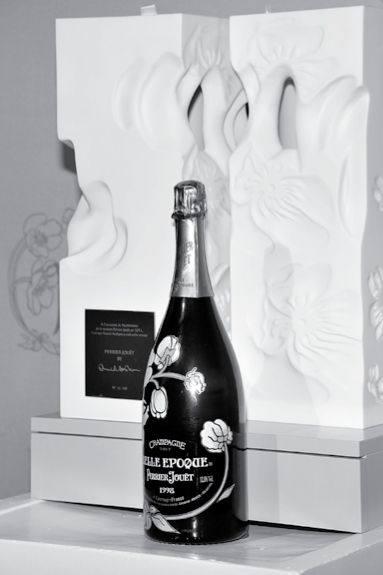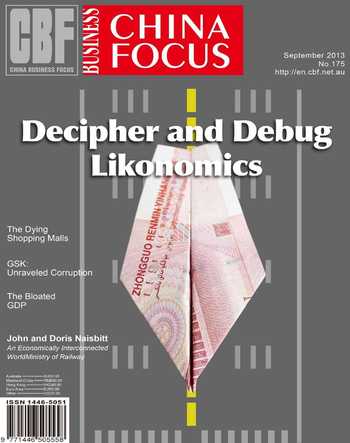Pernod Ricard:New Boss, New Goal
This July, French wine & spirits giant Pernod Ricard met its first Chinese boss in China after a dozen of years development in this country. Horace Ngai, a Hong Kong businessman previously taking the deputy managing director of Pernod Ricard China, took the place of Con Constandis as the managing director of Pernod Ricard China.
However, whats greeting Ngai is not a constantly growing market. Pernod Ricards 2012-2013 financial report showed that its most important product Scottish whiskey for the first time saw the drop in sales in China in 2012.
This year, the Chinese government banned the “excessive consumption of expensive wines and spirits of governmental officials”, which further clouded the market outlook.
Horace Ngai expressed confident opinions towards Pernod Ricards business in China, but he stressed that the year of 2013 is a very important year.
Channel Adjustment
As the earliest foreign wine brand that got into China, Pernod Ricard, the earlier birds, are always holding an ad- vantageous place in the Chinese market.
According to the data published by Con Constandis, Pernod Ricard saw the profits upon its initial entry in China. Now, the Chinese market has already become the second largest market for Pernod Ricard with the annual net sales revenue of 1 billion euros.
When speaking of last years performance, Ngai said that the macro economic situation is to blame for the underperformance.“A lot of Pernod Ricards whiskey is sold in bars and KTVs. Last year, the two public entertainment sites were greatly influenced by the depressed economy and had problems in operation.”
Then, the control of governmental spending on bouquets not only brought great impact to the Chinese luxury spirit makers, but also affected foreign wine brands.
In addition, the com- petition got more intense in recent years. New playersentry and efforts forced Pernod Ricard to change its business structure and strategies. Bars are the most important market channels that every foreign wine company wants to take. “Pernod Ricard could join the‘price war, but no benefits could be gained even if we win the battle,” said Horace Ngai.
Last year, Pernod Ricard removed some channels that cannot make money, which directly affected the sale of whiskey in China.
Con Constandiss data also showed that “Pernod Ricard has covered all first-, second-tier and third-tier cities, as well as 60% of fourth-tier cities in China”. Therefore, the rest fourth-tier cities are considered the new growth point of profits by Ngai. “Our profits are still at a reasonable level,” he said.
“Last year, we established a store in Tmall (a Chinese B2C website). The sales volume made from the Internet in the past year was the same with the one from a third-tier city – more than 10 thousand cases of wines are sold with the sales volume of tens of millions yuan,” Ngai said gleefully, showing his confidence in the ecommerce.
“I expect the business volume on the Internet to increase fourfold this year compared with last year,” he said. Apart from Tmall, Pernod Ricard also sells its products through another B2C website 360Buy, and it is going to extend its distribution arms to the living platforms.
In Ngais opinion, the Internet channel could be a complementation for the traditional retail channels. And the more important function of ecommerce is to get a Better access for its products to the family, another market on top of bars and nightclubs.
Female Consumers as the Main Group
Ever since its entry into China, Pernod Ricard firmly took the seat of No. 1 foreign wine brand in China with Martell and a batch of Scottish whiskey.
Philippe Guettat, CEO of Martell, Mumm and Perrier Jouet said that the sales volume of Martell ranked the first in Asia among all foreign wine brands from 2002 to 2012. However, along with the increasing sales are the triple marketing fees and tenfold advertising cost.
However, it is no longer OK for Pernod Ricard to compete in the market with only two products. The French company needs to find new consumer groups and launch new products.
In 2013, the grape wines represented by Jacobs Creek, as well as the“non-core products” like champagne and Absolute Vodka, are established as new business growth points. “The Chinese grape wine market is very big. I have been in this market for a while, but still cannot get access to many small and middle cities. Presently, we could sell hundreds of thousands of cases every year,” Horace Ngai said. The sales of champagne had a higher than 100% growth rate, and Absolute Vodka, which is redefined, got great development in these two years.
When the new consumer group emerges, Pernod Ricard and the other foreign wine giant Diageo shared the same idea – the female consumers are to be their main targets in the future.
In 2012, Diageo spent a lot of money and time in promoting Baileys Irish Cream, an Irish wine that is sold at around 100 yuan per bottle and looks like chocolate cream. Similar products used to be the coffee mate in the cafés or the base of cocktail in the bars, and are not very conspicuous at first, but from last July to December, the sales volume increased by over 40% and turned many Chinese women into Diageos loyal consumers.
Joe Tcheng, managing director of Diageo Greater China, said: “Many female consumers are likely to buy a bottle of Baileys Irish Cream and take it back home, share it with friends in the Party, or send it to others as a gift. These are what we would like to see.”
The H1 financial report of 2012-2013 financial year of Diageo showed that most of the sales volume of Baileys Irish Cream came from the offtrade channel. However, Joe Tcheng did not reveal how much money Diageo has made in Baileys Irish Cream.
To contend for the market of female consumers, Pernod Ricard chose champagne as the knockout products.
According to the data from Pernod Ricard, China imported 2 million bottles of champagne in 2012, but most of them are sold through nightclubs and in Beijing, Shanghai and Guangzhou. Therefore, Pernod Ricard believes that the “Chinese market has a great development potential”.
“What we have are not limited to high-end products,” Horace Ngai said. Pernod Ricard is ready. “How it looks and how it tastes are the necessary conditions that we think of carefully. The brand image should be attractive for girls, and the champagne should taste fine and is more prone to be accepted by females. Then, we need to think about when, where and under which mood they usually drink champagne.”
Apart from the high-end champagne brands like Perrier Jouet, Pernod Ricard also has Jacobs Creeks Moscato Sparkling Wine with the price of 10 yuan per bottle and alcohol content of 10 degrees as a supportive product for the French wine company to fight in the female wine market of China.
When the Chinese wine market stepped into the period of adjustment, Pernod Ricard, along with Diageo, cleverly targets the female consumers. The competition between them will get more and more intense and only the market can give out an answer in the future.

